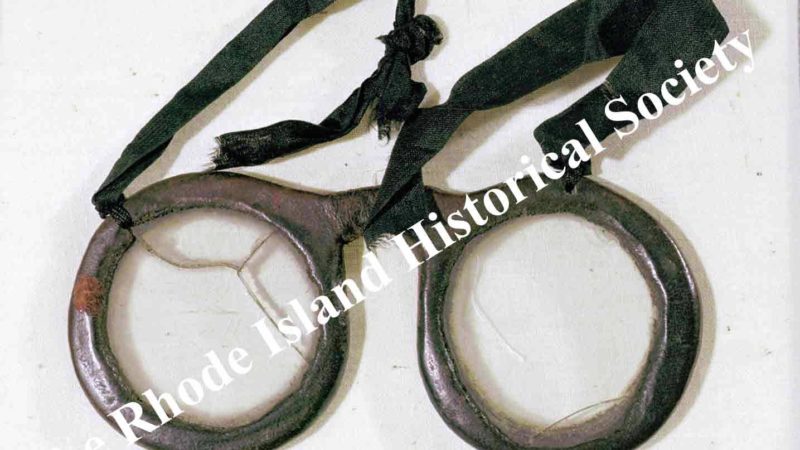
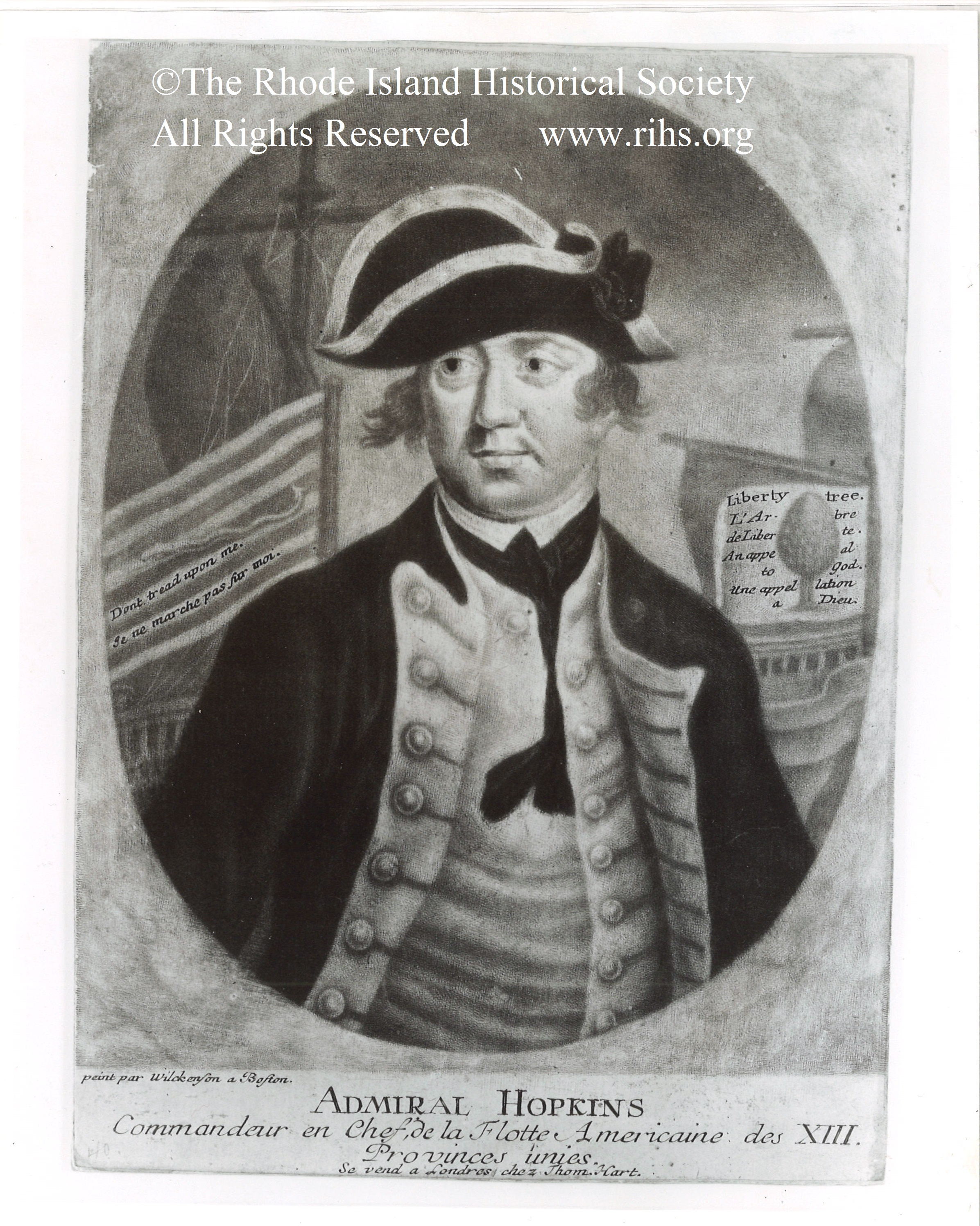
Esek Hopkins was born on April 26, 1718 in Scituate, Rhode Island to William Hopkins and Ruth Wilkinson. Esek was one of nine children and brother to Stephen Hopkins (Governor of Rhode Island and signer of the Declaration of Independence). He was the only Commander in Chief of the Continental Navy during the American Revolution; prior to the war he had sailed to nearly every quarter of the earth, commanded a privateer in the French and Indian War and served as a deputy to the Rhode Island General Assembly.
Esek grew up on the family farm though few details of his early life are available. One anecdote in Charles H. Miller’s biography of Hopkins “Admiral Number One” seems to show a spirited youth:
“In Providence in the early 1700’s chapels and meeting houses were a rarity. When an itinerant preacher once visited the Hopkins home he asked the young Esek to join with other lads in a contest to memorize a verse from the Bible, with a shilling prize to the boy who could repeat it without a mistake. A month later the man of God came again to the house and asked Esek to repeat what he had memorized. ‘And Jesus wept’ was Esek’s contribution, much to the chagrin of the preacher and the laughter of the assembled young Hopkinses.” (Admiral Number One: Some Incidents in the Life of Esek Hopkins, 1718-1802, First Admiral of the Continental Navy by Charles Hazelius Miller. E207 .H7 M5, 1962)
Esek left the farm at the age of twenty, pursued a career as a sailor and quickly rose up the ranks and became a prominent master mariner. When he married Desire Burroughs of Newport in 1741, he was a successful captain, merchant and privateer.
When war broke out between Great Britain and the American colonies, Rhode Island feared attack from the sea and pressed Congress for a navy of equal strength to the Continental Army. In October 1775 the navy was funded and Hopkins (now in his sixties) was appointed to be the Commander-in-Chief. The new navy battled against Britain as well local privateers who wanted the same, limited supplies and men for their vessels. He considered his orders discretionary and the enemy too strong. When told to attack the British fleet in the Chesapeake Bay, he instead sailed to the Bahamas and captured a British port at New Providence Island. By October of the following year, Congress felt Hopkins’ navy was not meeting their expectations; he was censured, and in January 1777 he was dismissed.
He continued to serve his country as a member of the Rhode Island general assembly. In 1802, he died on his farm in Providence at the age of eighty-two.
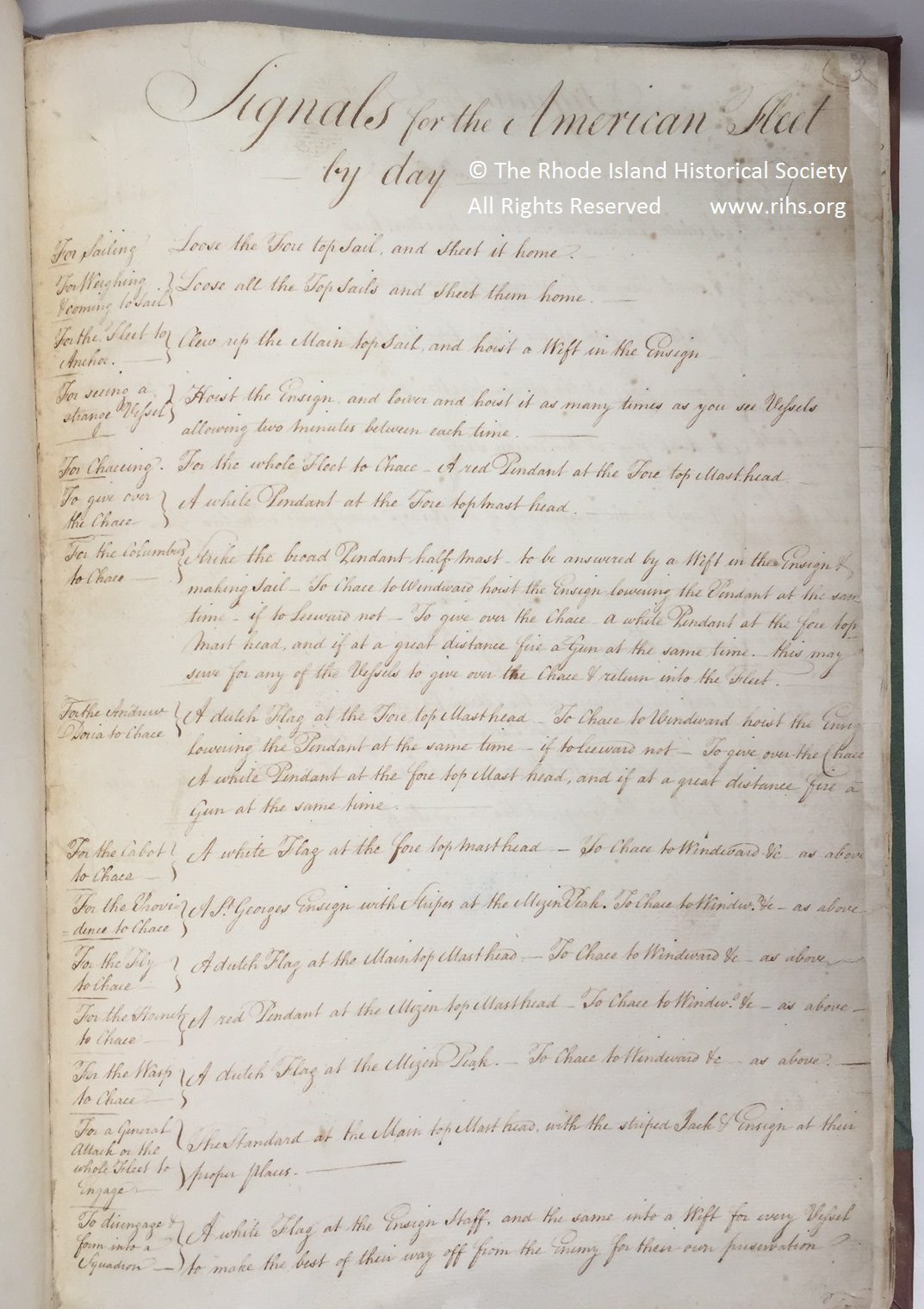
Hopkins Papers Vol. 1 1776-1777 (Letterbook) xB2 F2
During his time as a privateer and merchant, Esek was involved with the Atlantic Slave Trade, working for Nicholas Brown & Company. In September of 1764, with no prior experience in operating a slave trading vessel, he took command of the slave ship Sally and began a 15 month voyage to Africa and the West Indies. It was a disaster. Hopkins purchased a total of 196 enslaved Africans. He sold at least 21 to other traders and before leaving port, 20 had died. By the time Hopkins reached the island of Antigua, 68 had perished during the voyage with another 20 dying in the days after arrival. The remaining survivors were in such poor health, they sold for very little.
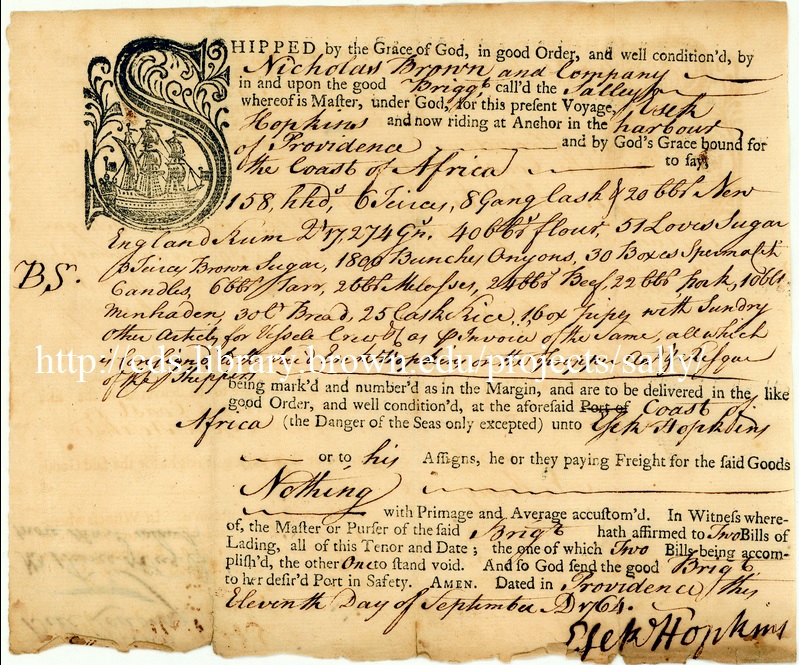
The AWESOME
These:
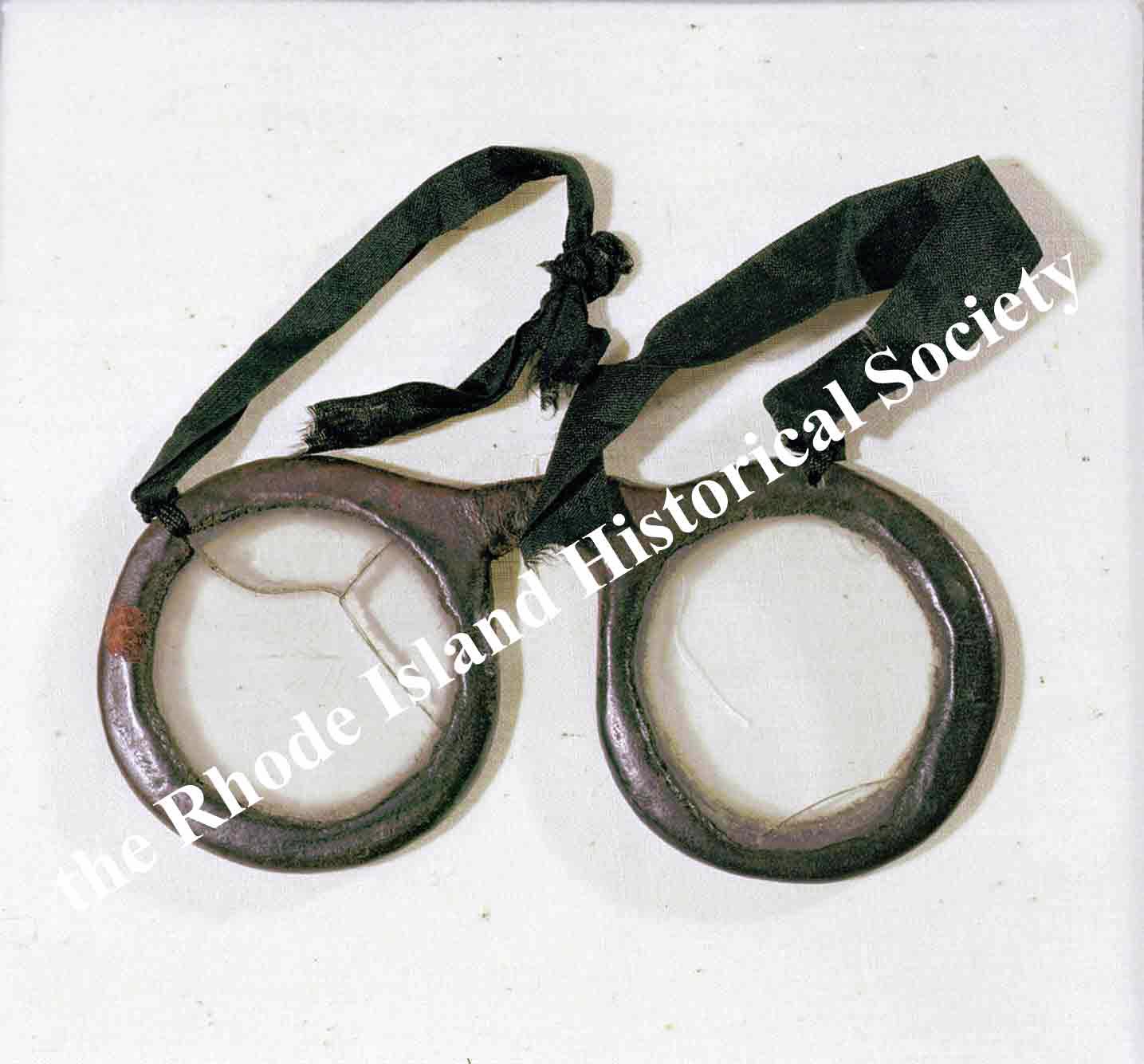
I told you. Awesome.
~ Jennifer L. Galpern, Research Associate/Special Collections
